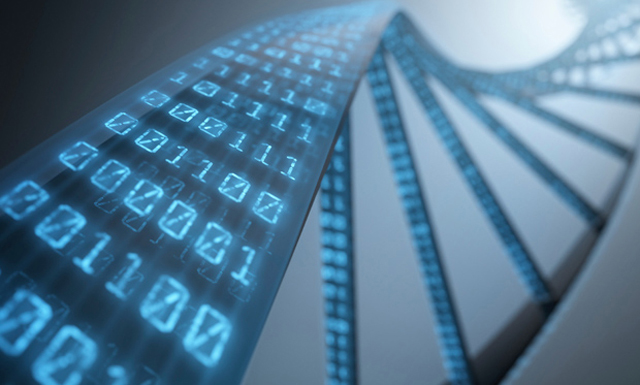Intro
Nowadays the most home computers contain either a HDD or SSD to store their data. Companies, however, still rely on the magnetic tape as storage (Technology review, 2016). But all this might change in the future. It seems that the four chemical building blocks, almost responsible for all life in earth, could replace our traditional storage systems. Yes you’ve read it right: your own DNA, a possible place to store digital data.
DNA data storage
Microsoft recently mentioned that storing digital information in synthesized DNA could be a better option for the long term. The company reported that it already has written 200 MB of information into DNA, which required around 1.5 billion bases (Technology review, 2016). In practical terms of speaking; it’s a fraction of a drop of liquid.
Although the costs of the process (encoding and decoding data to and from synthesized DNA) are declining, the process itself is still cost prohibitive (Forbes, 2016). However, Microsoft’s lead researcher on this project, Karen Strauss, says that ‘DNA is a good storage medium because data can be written into molecules more densely than the basic elements of conventional storage technologies can pack it in’.
Microsoft sees it as a necessity to explore the opportunities of a DNA data storage because the electronic storage devices don’t improve as rapidly as the growth of digital data. It is predicted by the IDC that the worldwide stored data will reach 16 trillion gigabytes, most of it housed in data centers. Microsoft, on the other hand, mentions that one shoe box worth of DNA is the equivalent of 100 data centers (Technology review, 2016).
Benefits of a DNA data storage
– Only one gram of DNA can hold up to 1,000,000,000 TB of data;
– Power losses do not result in data losses;
– Magnetic fields or extreme temperatures do not degrade the data;
– It’s long-lasting. In a stable state, the medium can last thousands of years without any degradation.
What are your thoughts on a DNA data storage?
Sources
http://arstechnica.com/information-technology/2016/04/microsoft-experiments-with-dna-storage-1000000000-tb-in-a-gram/
http://www.forbes.com/sites/jonmarkman/2016/07/22/dna-is-the-new-data-storage/#65c82ad649a0
https://www.technologyreview.com/s/601851/microsoft-reports-a-big-leap-forward-for-dna-data-storage/


He Olcan, a very interesting, futuristic topic you just introduced. To be honest, it is the first time I hear about storing data into synthesized DNA, but since DNA already stores all complex information from the human body, why not use these functionalities for other storage purposes. Next to this, as you mention yourself, current capacity issues with the magnetic tape used are rapidly solved. As I explore the articles you are referring to and look for other studies on the Internet, it seems that time the main constraint is for this technique to be universally implemented.
Like with every other new technological advancement, it takes time to develop, since it mostly about reinventing the wheel. But then again, as technology develops, so do the techniques that facilitate the implementation of these technologies. If time is the only constraint, then it will be only a matter of time for DNA storage to be the norm of storing data.
However, I would not have chosen to comment on your blog if I did not see any obstacles along this (long) way. One obstacle could be the issue with DNA data storage, perhaps one of the main reasons that it will take quite some time to contemplate it. DNA needs to be sequenced in order to retrieve the data, which is a slow process. Because of this timeliness, DNA data storage can only be realized for uses with a low access rate such as long-term archival of large amounts of scientific data. This being said, it is likely that the purposes of data are limited, certainly not for business related solutions. As this problem lies within the nature of the functionalities of DNA, it appears to be a structural problem, which can become impossible to solve. It shows that the advantages of the structure of DNA can also be detrimental for the success of it. On the other hand, the technological environment is one of the most fast changing ones in the world, so mankind will probably find a way sooner than we think.
Sources:
http://www.nature.com/news/synthetic-double-helix-faithfully-stores-shakespeare-s-sonnets-1.12279
https://www.ncbi.nlm.nih.gov/pmc/articles/PMC3672958/